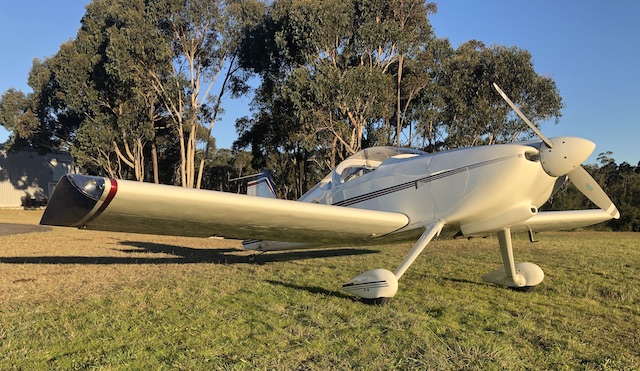

VH-SOL is an RV-6 amateur built aircraft. Australian aviation safety regulations accommodate skilled home builders constructing their own airplanes (Qantas built six of their early airliners!), and a company called Vans Aircraft in Oregon has produced kits for the RV series of single-engine light aircraft.
The RV-6 is a two seat airplane with a 160 hp 320in3 fuel injected Lycoming IO-320-D2A aircraft engine. It carries 140 litres of aviation gasoline ("AVGAS" or "100LL") fuel in two tanks, which give it 5 hours of endurance at about 140 knots (260km/h). Its maximum speed is 182 knots (335km/h), and it can perform basic aerobatics at up to 6g load factors.

The aircraft is equipped with a Garmin GTN650Xi aviation-grade GPS navigation system accurate to about 1.5m, a pair of Garmin G3X Touch glass-cockpit displays, a backup Garmin G5 digital flight instrument with its own independent backup power systems, two VHF radios for comms with ATC and other airplanes, and a Garmin GFC 500X autopilot. The main instruments are networked together, so the GPS system can instruct the autopilot to fly the aircraft around a predetermined flight path and display its status on the digital displays. It has enough equipment and backup systems to legally fly at night or in "instrument conditions" in cloud or fog.
Emergency equipment is in an enclosure on the back of the pilot seat. There's a first aid kit, a satellite rescue beacon, and a rescue strobe light for visibility. I usually fly with a satellite "SPOT tracker" on my arm too. If we run into trouble, there will be lots of ways to make helicopters come to collect us.
We don't usually fly over water, but if we do our safety equipment will include life jackets. We'll put them on before we board, and wear them for the whole flight. It is vitally important that they not be inflated while you are inside the aircraft.